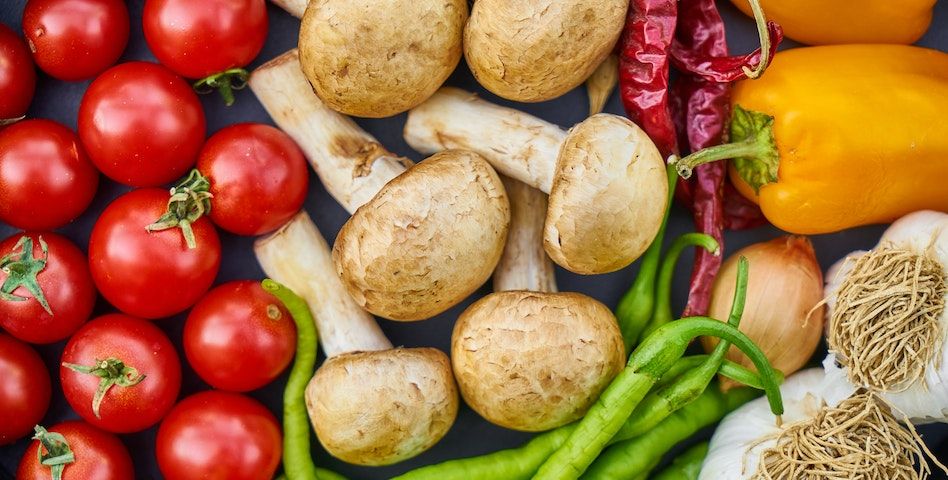Making Food Healthy and Tasty: Unveiling the Culinary Balance
In this blog, we'll delve into the art of making food healthy and tasty, offering a delightful culinary journey that nurtures your body and delights your senses.

Indulging in delicious food is one of life's greatest pleasures. However, there's often a dilemma between savoring flavors and maintaining a healthy diet. Fortunately, the two are not mutually exclusive. With the right techniques and ingredient choices, you can create dishes that are both nutritious and tantalizing to the taste buds. In this blog, we'll delve into the art of making food healthy and tasty, offering a delightful culinary journey that nurtures your body and delights your senses.
Balancing Flavor and Nutrition: A Harmonious Approach
The key to making food both healthy and tasty lies in striking a harmonious balance between flavors and nutrition. This balance involves selecting nutrient-rich ingredients while incorporating techniques that enhance the taste profile of your dishes.

Strategy 1: Start with Fresh, Whole Ingredients
The foundation of any healthy and tasty meal is the quality of ingredients. Opt for fresh, whole foods that are minimally processed. Fresh produce, lean proteins, whole grains, and legumes form the basis of a nutrient-rich meal.
Strategy 2: Experiment with Herbs and Spices
Herbs and spices are culinary powerhouses that add depth and complexity to your dishes without the need for excessive salt, sugar, or unhealthy fats. Experiment with a wide range of flavors, from aromatic basil to warm cinnamon, to elevate your meals.
Strategy 3: Master the Art of Seasoning
Proper seasoning is an essential skill in the culinary world. Learn to balance the flavors of salty, sweet, sour, and bitter to create well-rounded dishes that engage the palate. A pinch of salt or a drizzle of honey can make all the difference.
Healthy Cooking Techniques: Elevating Nutritional Value
Cooking techniques play a pivotal role in preserving nutrients while enhancing the taste of your dishes. Choose methods that retain the integrity of ingredients and reduce the need for excessive oil or unhealthy additives.
Strategy 1: Grilling and Roasting
Grilling and roasting are excellent techniques for intensifying flavors while allowing excess fat to drip away. Vegetables, lean meats, and fish develop a delightful smokiness that can transform a simple meal into a culinary masterpiece.
Strategy 2: Steaming and Boiling
Steaming and boiling are gentle methods that help preserve the nutrients present in food. Whether it's vibrant vegetables or delicate seafood, these techniques ensure that you're getting the most out of your ingredients.
Strategy 3: Sautéing with Healthy Fats
Sautéing with healthy fats like olive oil or coconut oil infuses dishes with rich flavors while providing essential nutrients. Aromatic garlic and onions sizzling in a pan can create the base for a mouthwatering and nutritious meal.

Innovative Ingredient Substitutions: The Healthy Twist
Part of the art of creating healthy yet delicious food involves making smart ingredient substitutions that cut down on unhealthy elements without compromising on taste.
Strategy 1: Swapping Refined Carbs for Whole Grains
Replace refined grains with whole grains like quinoa, brown rice, or whole wheat pasta. These options are higher in fiber and nutrients, contributing to a more satisfying and wholesome meal.
Strategy 2: Incorporating Plant-Based Proteins
Introducing plant-based proteins such as beans, lentils, and tofu adds variety to your diet while reducing saturated fat intake. These ingredients can be used creatively to produce mouthwatering dishes.
Strategy 3: Exploring Natural Sweeteners
When it comes to desserts and sweet treats, consider using natural sweeteners like honey, maple syrup, or agave nectar instead of refined sugar. These options provide a unique flavor profile while being kinder to your health.
Culinary Creativity: Fusion of Cuisines and Flavors
Don't be afraid to experiment with fusion cuisine and unconventional flavor pairings. Combining elements from different cuisines can lead to exciting, flavorful, and healthful dishes.
Strategy 1: Embrace Global Inspirations
Explore cuisines from around the world to discover new ways of using spices, herbs, and ingredients. Incorporating elements from Mediterranean, Asian, or Middle Eastern cuisines can introduce novel flavors to your cooking.
Strategy 2: Play with Texture and Color
The visual appeal of a dish can greatly enhance its enjoyment. Incorporate a variety of colorful vegetables and ingredients with different textures to create visually enticing and satisfying meals.
Strategy 3: Balance Sweet and Savory
Experiment with incorporating sweet and savory flavors in your dishes. The contrast between these flavors can create a symphony of taste that tantalizes the taste buds.

Conclusion: Savoring Healthful Pleasures
In the realm of culinary exploration, making food healthy and tasty is a delightful art form that requires a fusion of knowledge, technique, and creativity. By understanding the interplay of flavors, mastering cooking techniques, and exploring innovative ingredient substitutions, you can elevate your meals to a higher level of gastronomic satisfaction. The journey to crafting nutritious and delectable dishes is a continuous one, offering endless opportunities to experiment, create, and savor the healthful pleasures of the dining experience.